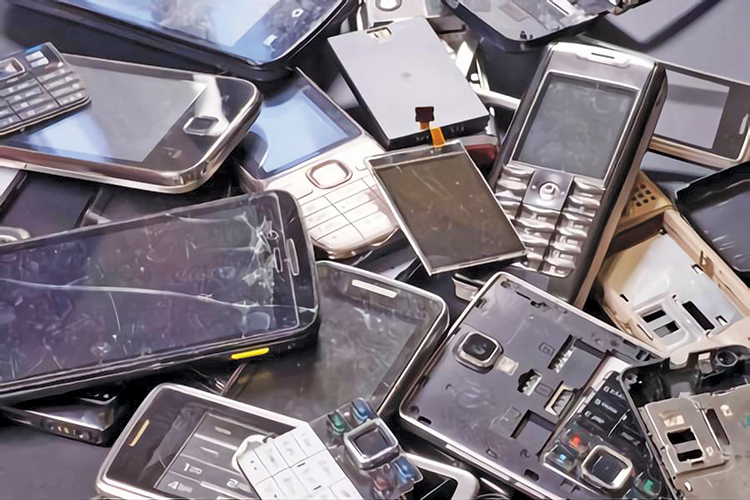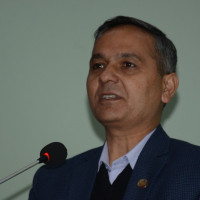- Wednesday, 24 December 2025
NAST's gold hunt from mobile phones
Kathmandu, May 4: What do you do with your old mobile phones? Do you give them to others, sell them for scrap or just throw them? Do you think that smartphones or other electronic items, when old and broken, are useless? Did you know that there might be precious metals inside the device you consider unusable and ready for the trash bin?
Well, there is, as per the National Academy of Science and Technology (NAST), which has been researching the recovery of gold from e-waste like mobile phones and computers for the last four months.
“One tonne of natural ore produces only a gram of gold. But we can extract more than that from electronic gadgets,” informed Dr. Rabindra Dhakal, chief of the faculty of technology at NAST.
Based on the Academy’s research to date, Dr. Dhakal added that urban electronic waste was an ideal stuff to sustainably source gold.
Dr. Saurabh Bhattarai, research fellow in the same faculty, informed that 10 times more gold could be obtained from e-waste than from natural ores. “As per the universal data, approximately 0.2 per cent of the total metal content of a mobile phone set is recoverable gold. That number is 0.1 per cent to 0.2 per cent for other e-waste items,” he said.
“Mobile phones contain more gold than other electronics and old feature phones contain more gold than new smartphones,” Bhattarai informed.
Recycling old phones for the yellow metal will provide an incentive to recycle old phones too, he opined. “Phone sets contain harmful chemicals, particularly in the batteries, which do not degrade in the landfills.”
Recycling them to extract valuable materials will be a win-win situation, Dhakal said, as it will reuse and reduce e-waste and provide an easy source of gold which is costly to extract from mines.And almost nothing goes to waste here, Dhakal keenly stressed. “The plastic that remains after the recovery of gold can be used to produce fuel,” he said.
Gold recovery from e-waste is not a novel concept. Last year, all the medals for the Tokyo Olympics were made with gold obtained from discarded electronics.
In Nepal too, the knowledge to extract gold in such a way exists and work on developing the laboratory infrastructure is ongoing, Dhakal added.
Meanwhile, Bhattarai further said that the process to dismantle e-waste was highly toxic and the present research was also focused on devising a non-toxic method to do so.
According to a 2019 report by the United Nations, the world produces 53.6 million metric tonnes of electronic and electrical waste a year.
In 2030, it is estimated that we will be producing 74.7 million metric tonnes of e-waste.

















